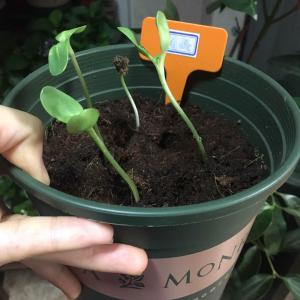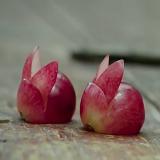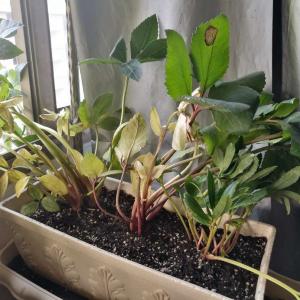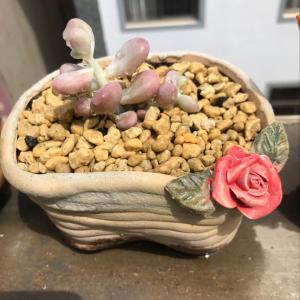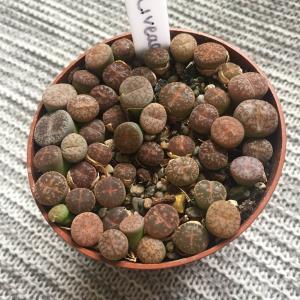文章
Miss Chen
2018年05月16日

Description: Depending on its stage of development, this herbaceous perennial plant is about 3-12" tall. It produces only basal leaves that are about 3-5" wide and across. Each of these basal leaves is wrapped around the stalk of a single flower (sometimes two stalks are produced) as the flower begins to bloom. The basal leaves continue to unfold to their fullest extent as the flowers wither away. Each basal leaf is oval-orbicular in outline and palmate-reticulately veined, with 5-9 major lobes and several minor lobes along the undulating margins. The palmate-reticulate venation is fairly prominent and provides the rather succulent leaves with a wrinkly appearance, especially on their lower surfaces. The color of the leaves on the upper surface is light green, sometimes with greyish or bluish tints, while the lower surface is whitish green. The terete petioles are about 4" long and rather stout. The foliage of this plant is glabrous and glaucous.
The flowering stalk is terete, stout, glabrous, and sometimes slightly reddish, terminating in a single large flower. This stalk is about 3-4" tall when the flower begins to bloom. The flower is about 1½–3" across, consisting of 8-16 white petals, a green oval pistil, and numerous stamens with prominent yellow anthers. The pistil has a pale yellow stigma at its apex. There are 2 light green sepals that are nearly as long as the petals, but they fall off the flowering stalk as soon as the flower begins to bloom. The blooming period occurs from early to mid-spring, lasting about 2 weeks. Each flower remains in bloom for only 1 or 2 days (when it is sunny), producing a fragrant scent. Afterwards, each flower is replaced by a seed capsule that becomes enlarged and eventually turns yellow, splitting open to release its seeds. The root system consists of thick reddish rhizomes with coarse fibrous roots. Both the foliage and the rhizomes contain an acrid reddish juice. This plants often forms vegetative colonies.

Cultivation: During early to mid-spring, this plant should have access to some sunlight, otherwise the flowers may fail to open. After the trees begin to form leaves later in the spring, considerable shade is tolerated. The soil should be fertile and loamy, with average moisture levels (by woodland standards). The foliage is not affected by disease significantly, although it will gradually wither away as the summer progresses.
Range & Habitat: Bloodroot is a common plant that occurs in most counties of Illinois (see Distribution Map), where it is native. Habitats include rich deciduous woodlands, wooded slopes, edges of bluffs, shaded ravines, banks of rivers in wooded areas, and areas along woodland paths.

Faunal Associations: The pollen of the flowers attracts various kinds of bees, including honeybees, bumblebees, little carpenter bees (Ceratina spp.), Halictid bees (Halictus spp., Lasioglossum spp.), and Andrenid bees (Andrena spp.). Other insects that visit the flowers include Syrphid flies and beetles, which feed on the pollen (or search vainly for nectar). An aphid, Linosiphon sanguinarium, sucks plant juices from the leaf undersides. The seeds of Bloodroot are distributed by ants because of their fleshy appendages. This is a common method of seed distribution for woodland wildflowers, as wind speeds are greatly reduced in wooded areas. The foliage and rhizomes contain an acrid reddish juice and they are toxic. Consequently, this plant is not often eaten by mammalian herbivores, although White-Tailed Deer browse sparingly on the succulent leaves.

Photographic Location: A partially-shaded flower garden near Busey Woods in Urbana, Illinois.
Comments: Bloodroot is one of the spring ephemerals of deciduous woodlands. It has very showy flowers and unusual-looking, but attractive, foliage. Unfortunately, the flowers are relatively short-lived. Across different localities, there are significant variations in this plant, involving such characteristics as the number of petals and size of the flowers, and the appearance of the foliage. On rare occasions, light pink flowers are produced. The Amerindians created a red dye from the juice of the rhizomes. The juice of plants in this genus possesses anti-bacterial properties with possible pharmaceutical applications, including an anti-plaque mouthwash.
The flowering stalk is terete, stout, glabrous, and sometimes slightly reddish, terminating in a single large flower. This stalk is about 3-4" tall when the flower begins to bloom. The flower is about 1½–3" across, consisting of 8-16 white petals, a green oval pistil, and numerous stamens with prominent yellow anthers. The pistil has a pale yellow stigma at its apex. There are 2 light green sepals that are nearly as long as the petals, but they fall off the flowering stalk as soon as the flower begins to bloom. The blooming period occurs from early to mid-spring, lasting about 2 weeks. Each flower remains in bloom for only 1 or 2 days (when it is sunny), producing a fragrant scent. Afterwards, each flower is replaced by a seed capsule that becomes enlarged and eventually turns yellow, splitting open to release its seeds. The root system consists of thick reddish rhizomes with coarse fibrous roots. Both the foliage and the rhizomes contain an acrid reddish juice. This plants often forms vegetative colonies.

Cultivation: During early to mid-spring, this plant should have access to some sunlight, otherwise the flowers may fail to open. After the trees begin to form leaves later in the spring, considerable shade is tolerated. The soil should be fertile and loamy, with average moisture levels (by woodland standards). The foliage is not affected by disease significantly, although it will gradually wither away as the summer progresses.
Range & Habitat: Bloodroot is a common plant that occurs in most counties of Illinois (see Distribution Map), where it is native. Habitats include rich deciduous woodlands, wooded slopes, edges of bluffs, shaded ravines, banks of rivers in wooded areas, and areas along woodland paths.

Faunal Associations: The pollen of the flowers attracts various kinds of bees, including honeybees, bumblebees, little carpenter bees (Ceratina spp.), Halictid bees (Halictus spp., Lasioglossum spp.), and Andrenid bees (Andrena spp.). Other insects that visit the flowers include Syrphid flies and beetles, which feed on the pollen (or search vainly for nectar). An aphid, Linosiphon sanguinarium, sucks plant juices from the leaf undersides. The seeds of Bloodroot are distributed by ants because of their fleshy appendages. This is a common method of seed distribution for woodland wildflowers, as wind speeds are greatly reduced in wooded areas. The foliage and rhizomes contain an acrid reddish juice and they are toxic. Consequently, this plant is not often eaten by mammalian herbivores, although White-Tailed Deer browse sparingly on the succulent leaves.

Photographic Location: A partially-shaded flower garden near Busey Woods in Urbana, Illinois.
Comments: Bloodroot is one of the spring ephemerals of deciduous woodlands. It has very showy flowers and unusual-looking, but attractive, foliage. Unfortunately, the flowers are relatively short-lived. Across different localities, there are significant variations in this plant, involving such characteristics as the number of petals and size of the flowers, and the appearance of the foliage. On rare occasions, light pink flowers are produced. The Amerindians created a red dye from the juice of the rhizomes. The juice of plants in this genus possesses anti-bacterial properties with possible pharmaceutical applications, including an anti-plaque mouthwash.
1
0
文章
Miss Chen
2018年05月16日

Description: This herbaceous perennial plant is about 1½–3' tall, branching occasionally. The stems are green, terete to angular, and either glabrous or sparsely hairy along two opposite lines. The opposite leaves are up to 5" long and 3" across; they are lanceolate to ovate in shape and smooth or slightly undulate along their margins. The upper leaf surface is yellowish green to dark green and glabrous (or nearly so), while the lower leaf surface is pale to medium green and glabrous to sparsely hairy along the undersides of the veins. The petioles are ¼–½" long. From the axils of the middle to upper leaves, there develops 1-3 flowers that are nearly sessile. Less often, such flowers will terminate a lateral stem that is up to 6" long, directly above a pair of leaves.
Each flower is about 2" long and 1½" across, consisting of a funnelform corolla that is pinkish lavender to bluish violet (rarely white, except at its base), a green short-tubular calyx with long slender teeth, 4 inserted stamens, and a pistil with an inserted style. The corolla is narrowly tubular at the base, but it spreads outward to form 5 rounded lobes. The lobes of the corolla have undulate edges and a delicate appearance. At the throat of the corolla, there are several fine veins that are purple and somewhat reticulated; they function as nectar guides for visiting insects. The tubular portion of the calyx is about ¼" long or a little less, while its teeth are ½–1" long, linear-lanceolate in shape, strongly ciliate along their margins, and 2-3 mm. across.

The blooming period occurs during the summer for 2-3 months. Each diurnal flower lasts only a single day; a single mature plant will have about 0-2 flowers in bloom during a typical summer day. The flowers are often partially hidden by the foliage. Afterwards, the flowers are replaced by glabrous seed capsules that are up to ¾" long. Each of these capsules contains several seeds that are released explosively. Individual seeds are about 3 mm. (1/8") across, flattened-globoid in shape, and brown to dark brown. There is a less common form of this plant that produces non-showy cleistogamous flowers (f. cleistantha); it usually has more narrow leaves than the typical form (f. strepens).

Cultivation: The preference is light shade or partial sun, moist to mesic conditions, and either loamy or rocky soil containing some organic matter. This plant is not often bothered by either disease and insect pests. It may fail to flower in areas with medium to dense shade.
Range & Habitat: The native Smooth Wild Petunia occurs occasionally in southern and central Illinois, while it is absent in the northern section of the state (see Distribution Map). Habitats include moist to mesic open woodlands, woodland edges, areas along woodland paths, thickets, thinly wooded slopes along rivers, and rocky banks of streams. In woodlands where there is an absence of fire or other disturbance, populations of this plant may decline because of excessive shade, particularly when those woodlands have become dominated by Sugar Maple (Acer saccharum) and other woody vegetation that cast heavy shade.

Faunal Associations: The flowers have few visitors, although their nectar and pollen occasionally attract the smaller long-tongued bees (personal observation). Robertson (1929) observed the long-horned bee, Synhalonia speciosa, visiting the flowers of Smooth Wild Petunia. According to MacRae (1991), the adults of some metallic wood-boring beetles (Acmaeodera spp.) also visit the flowers. Sometimes pieces of the corolla are used by leaf-cutting bees (Megachile spp.) in the construction of their brood nests; these bees may also visit the flowers for nectar and pollen. The caterpillars of a butterfly, Junonia coenia (Buckeye), have been observed feeding on the foliage of Ruellia spp. (Wild Petunias). Otherwise, little is known about floral-faunal relationships for plants in this genus.
Photographic Location: Along a path in a mesic area of Busey Woods, Urbana, Illinois, and along the rocky bank of a stream in southern Illinois.

Comments: The flowers of Ruellia spp. (Wild Petunias) have a striking resemblance to the flowers of the cultivated Petunia (Petunia × hybrida), which has been introduced from South America and belongs to a different family of plants (Solanaceae). However, the flowers of Wild Petunias have less diversity of color. Mohlenbrock (2003) describes 4 Ruellia spp. in Illinois; some of these are restricted to the southern one-third of the state. Smooth Wild Petunia (Ruellia strepens) is very similar in appearance to Carolina Wild Petunia (Ruellia caroliniensis) and Stalked Wild Petunia (Ruellia pedunculata). Its calyx teeth are wider (2.0–3.0 mm. across), whereas the latter two species have linear calyx teeth that are only 1.0–1.5 mm. across. Stalked Wild Petunia also differs by producing terminal flowers on long lateral stems only, rather than non-terminal flowers from the axils of leaves, and its stems are more hairy. Some authors regard Smooth Wild Petunia and Carolina Wild Petunia as variants of the same species. The remaining species of this genus in Illinois, Hairy Wild Petunia Smooth (Ruellia humilis), is a shorter plant with much hairier stems and leaves than Smooth Wild Petunia. Hairy Wild Petunia also prefers habitats that are more sunny and dry, such as prairies.
Each flower is about 2" long and 1½" across, consisting of a funnelform corolla that is pinkish lavender to bluish violet (rarely white, except at its base), a green short-tubular calyx with long slender teeth, 4 inserted stamens, and a pistil with an inserted style. The corolla is narrowly tubular at the base, but it spreads outward to form 5 rounded lobes. The lobes of the corolla have undulate edges and a delicate appearance. At the throat of the corolla, there are several fine veins that are purple and somewhat reticulated; they function as nectar guides for visiting insects. The tubular portion of the calyx is about ¼" long or a little less, while its teeth are ½–1" long, linear-lanceolate in shape, strongly ciliate along their margins, and 2-3 mm. across.

The blooming period occurs during the summer for 2-3 months. Each diurnal flower lasts only a single day; a single mature plant will have about 0-2 flowers in bloom during a typical summer day. The flowers are often partially hidden by the foliage. Afterwards, the flowers are replaced by glabrous seed capsules that are up to ¾" long. Each of these capsules contains several seeds that are released explosively. Individual seeds are about 3 mm. (1/8") across, flattened-globoid in shape, and brown to dark brown. There is a less common form of this plant that produces non-showy cleistogamous flowers (f. cleistantha); it usually has more narrow leaves than the typical form (f. strepens).

Cultivation: The preference is light shade or partial sun, moist to mesic conditions, and either loamy or rocky soil containing some organic matter. This plant is not often bothered by either disease and insect pests. It may fail to flower in areas with medium to dense shade.
Range & Habitat: The native Smooth Wild Petunia occurs occasionally in southern and central Illinois, while it is absent in the northern section of the state (see Distribution Map). Habitats include moist to mesic open woodlands, woodland edges, areas along woodland paths, thickets, thinly wooded slopes along rivers, and rocky banks of streams. In woodlands where there is an absence of fire or other disturbance, populations of this plant may decline because of excessive shade, particularly when those woodlands have become dominated by Sugar Maple (Acer saccharum) and other woody vegetation that cast heavy shade.

Faunal Associations: The flowers have few visitors, although their nectar and pollen occasionally attract the smaller long-tongued bees (personal observation). Robertson (1929) observed the long-horned bee, Synhalonia speciosa, visiting the flowers of Smooth Wild Petunia. According to MacRae (1991), the adults of some metallic wood-boring beetles (Acmaeodera spp.) also visit the flowers. Sometimes pieces of the corolla are used by leaf-cutting bees (Megachile spp.) in the construction of their brood nests; these bees may also visit the flowers for nectar and pollen. The caterpillars of a butterfly, Junonia coenia (Buckeye), have been observed feeding on the foliage of Ruellia spp. (Wild Petunias). Otherwise, little is known about floral-faunal relationships for plants in this genus.
Photographic Location: Along a path in a mesic area of Busey Woods, Urbana, Illinois, and along the rocky bank of a stream in southern Illinois.

Comments: The flowers of Ruellia spp. (Wild Petunias) have a striking resemblance to the flowers of the cultivated Petunia (Petunia × hybrida), which has been introduced from South America and belongs to a different family of plants (Solanaceae). However, the flowers of Wild Petunias have less diversity of color. Mohlenbrock (2003) describes 4 Ruellia spp. in Illinois; some of these are restricted to the southern one-third of the state. Smooth Wild Petunia (Ruellia strepens) is very similar in appearance to Carolina Wild Petunia (Ruellia caroliniensis) and Stalked Wild Petunia (Ruellia pedunculata). Its calyx teeth are wider (2.0–3.0 mm. across), whereas the latter two species have linear calyx teeth that are only 1.0–1.5 mm. across. Stalked Wild Petunia also differs by producing terminal flowers on long lateral stems only, rather than non-terminal flowers from the axils of leaves, and its stems are more hairy. Some authors regard Smooth Wild Petunia and Carolina Wild Petunia as variants of the same species. The remaining species of this genus in Illinois, Hairy Wild Petunia Smooth (Ruellia humilis), is a shorter plant with much hairier stems and leaves than Smooth Wild Petunia. Hairy Wild Petunia also prefers habitats that are more sunny and dry, such as prairies.
1
1
求助
Lucky Coyote
2018年05月15日

ID please?
Tallest stalk is 3 feet tall, blooms with gorgeous deep purple, fragrant flowers, it has VERY 😍 soft leaves, and we've had it for about 2 years
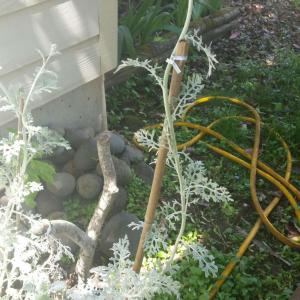
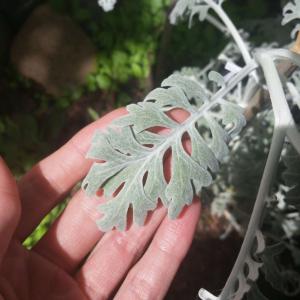
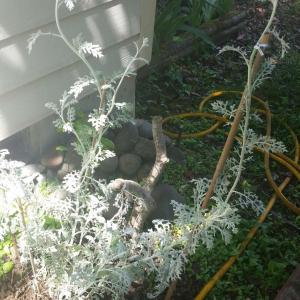
Tallest stalk is 3 feet tall, blooms with gorgeous deep purple, fragrant flowers, it has VERY 😍 soft leaves, and we've had it for about 2 years



0
0
杨天真:银叶菊
sunnyzou:Dusty Miller
meriunkat:Vioilet Yarrow?
文章
权问薇
2018年05月14日


1、适时移栽
等到它有3到4片叶子长出时,可以找来一个16厘米口径大小的盆子将其移栽进去,盆土用腐叶土、菜园土、粗砂、草木灰等混配而成,以保证土壤的疏松性和排水性能。之后就可对其浇上透水,并放在较阴凉地养护,不可受阳光直射。

2、控制温度
等到霜降到来之后,即天气开始变冷时,如果你在北方,需要将它及时搬到温度较低的温室中,或者放在阳台上,并维持温度在10到20度之间,不可超过30度,不然,就会让叶片因为闷热变得发黄,这样根茎也较容易烂掉。同时,等到它到了现蕾时期,温度也应多加注意,最好将之控制在7到10度之间,这样可使花朵提前开放。

3、适当追肥
它极其喜肥,所以在养护的过程中,肥料对它很重要,应该每隔上一星期对其施加一次,肥料不仅使用有机肥,还要使用无机肥。在第一次施肥时,用鸡猪粪液肥最好,并保证浓度适当,第二次施肥时,以磷酸二氢钾为主,其浓度为3%,第三次施肥以无机肥料为主,这样轮流使用起来,可让花蕾早日开始分化。如果现蕾初期在春节前半个月,那它在春节即可开出花来。
4、适当舒蕾
在它刚出现花蕾时,应给它适当舒蕾,只留下3到5个健壮花蕾即可,这样就可让其花朵更大,观赏性也更佳。等到开花之后,还要及时将残花剪掉,防止营养流失,以让它开出更多花。

0
1
文章
Miss Chen
2018年05月13日

Description: This herbaceous perennial plant is about 3-6" tall. It consists of a tuft of basal leaves that develops during the late spring and persists through the winter. These leaves are up to 3" long and across; they have slender petioles up to 6" long. Each leaf is palmately divided into 3 lobes; the lobes are oval-ovate and approximately the same size. The smooth upper surface of each leaf can be green, brownish green, reddish brown, or contain patches of the preceding colors; usually, the upper surface is more green during the summer, but become reddish brown during the winter. The leaf margins are smooth; for var. acuta, the tips of the lobes are rather pointed in mature leaves.
A mature plant will produce a tuft of flowers on long stalks during early to mid-spring, by which time the basal leaves that persisted during the winter may have withered away. Each flower occurs on a naked hairy stalk about 3-4" long; this stalk is often reddish green or reddish brown. The flower may be erect or it may nod on its stalk. Each flower is up to 1" across, consisting of 5-11 petal-like sepals, a green cluster of carpels in its center, and numerous white stamens surrounding the carpels. The sepals are white, pastel pink, or pastel blue; each sepal is oblong-oval in shape. At the base of each flower, there are 3 leafy bracts that are lanceolate, ovate, or oval in shape. These bracts are reddish green or reddish brown, hairy across the outer surface, and shorter than the sepals. The blooming period occurs during early to mid-spring and lasts about 2-3 weeks for a colony of plants; however, individual flowers are short-lived. The carpels turn brown and become beaked achenes that are often pubescent. The root system consists of a tuft of fibrous roots. This plant spreads by reseeding itself.

Cultivation: The preference is dappled sunlight during the spring and light shade during the summer. The basal leaves should be left undisturbed during the winter. The soil should be well-drained, loamy, and can contain some rocky material, including pieces of limestone; a thin-layer of decaying leaves is also beneficial.
Range & Habitat: The native Sharp-Lobed Hepatica is occasional in wooded areas of central and northern Illinois; it is uncommon or absent in southern Illinois (see Distribution Map). Habitats include upland deciduous woodlands, rocky bluffs, the slopes of bluffs, and limestone cliffs (where some shade occurs). Sharp-Lobed Hepatica occurs in high quality wooded areas where the original flora is largely intact. Sometimes it is cultivated as a rock garden plant. While Sharp-Lobed Hepatica is native to North America, the typical variety of Hepatica, Hepatica nobilis nobilis, occurs in Eurasia.

Faunal Associations: Small bees collect pollen from the flowers, while Syrphid flies and other flies feed on the pollen. Bee visitors include honeybees, Small Carpenter bees, Andrenid bees, and Halictid bees. Nectar is not provided by the flowers. Chipmunks reportedly eat the achenes. The brownish green basal leaves are poisonous and somewhat camoflaged; it seems unlikely that they are eaten by mammalian herbivores to any significant extent.
Photographic Location: The photographs of the blue and white flowers were taken at Kickapoo State Park, Vermilion County, Illinois, while the photographs of the pink flowers and basal leaf were taken on a sloping bank of the Sangamon river in Allerton Park, Piatt County, Illinois.

Comments: The flowers of Sharp-Lobed Hepatica bloom earlier than most spring-blooming wildflowers of woodlands. They are delicately attractive and have a tendency to blow about on their slender stems in the wind. Another native variety of this plant species is Hepatica nobilis obtusa (Round-Lobed Hepatica), which has a very similar appearance, except that the lobes of its basal leaves are well-rounded rather than pointed. This latter variety is apparently restricted to NE Illinois. Sometimes these two varieties intergrade where their ranges overlap. Some authorities refer to Sharp-Lobed Hepatica as Hepatica acutiloba, while Round-Lobed Hepatica is referred to as Hepatica americana. Another common name for Hepatica is Liverleaf, which refers to the appearance and shape of the leaves.
A mature plant will produce a tuft of flowers on long stalks during early to mid-spring, by which time the basal leaves that persisted during the winter may have withered away. Each flower occurs on a naked hairy stalk about 3-4" long; this stalk is often reddish green or reddish brown. The flower may be erect or it may nod on its stalk. Each flower is up to 1" across, consisting of 5-11 petal-like sepals, a green cluster of carpels in its center, and numerous white stamens surrounding the carpels. The sepals are white, pastel pink, or pastel blue; each sepal is oblong-oval in shape. At the base of each flower, there are 3 leafy bracts that are lanceolate, ovate, or oval in shape. These bracts are reddish green or reddish brown, hairy across the outer surface, and shorter than the sepals. The blooming period occurs during early to mid-spring and lasts about 2-3 weeks for a colony of plants; however, individual flowers are short-lived. The carpels turn brown and become beaked achenes that are often pubescent. The root system consists of a tuft of fibrous roots. This plant spreads by reseeding itself.

Cultivation: The preference is dappled sunlight during the spring and light shade during the summer. The basal leaves should be left undisturbed during the winter. The soil should be well-drained, loamy, and can contain some rocky material, including pieces of limestone; a thin-layer of decaying leaves is also beneficial.
Range & Habitat: The native Sharp-Lobed Hepatica is occasional in wooded areas of central and northern Illinois; it is uncommon or absent in southern Illinois (see Distribution Map). Habitats include upland deciduous woodlands, rocky bluffs, the slopes of bluffs, and limestone cliffs (where some shade occurs). Sharp-Lobed Hepatica occurs in high quality wooded areas where the original flora is largely intact. Sometimes it is cultivated as a rock garden plant. While Sharp-Lobed Hepatica is native to North America, the typical variety of Hepatica, Hepatica nobilis nobilis, occurs in Eurasia.

Faunal Associations: Small bees collect pollen from the flowers, while Syrphid flies and other flies feed on the pollen. Bee visitors include honeybees, Small Carpenter bees, Andrenid bees, and Halictid bees. Nectar is not provided by the flowers. Chipmunks reportedly eat the achenes. The brownish green basal leaves are poisonous and somewhat camoflaged; it seems unlikely that they are eaten by mammalian herbivores to any significant extent.
Photographic Location: The photographs of the blue and white flowers were taken at Kickapoo State Park, Vermilion County, Illinois, while the photographs of the pink flowers and basal leaf were taken on a sloping bank of the Sangamon river in Allerton Park, Piatt County, Illinois.

Comments: The flowers of Sharp-Lobed Hepatica bloom earlier than most spring-blooming wildflowers of woodlands. They are delicately attractive and have a tendency to blow about on their slender stems in the wind. Another native variety of this plant species is Hepatica nobilis obtusa (Round-Lobed Hepatica), which has a very similar appearance, except that the lobes of its basal leaves are well-rounded rather than pointed. This latter variety is apparently restricted to NE Illinois. Sometimes these two varieties intergrade where their ranges overlap. Some authorities refer to Sharp-Lobed Hepatica as Hepatica acutiloba, while Round-Lobed Hepatica is referred to as Hepatica americana. Another common name for Hepatica is Liverleaf, which refers to the appearance and shape of the leaves.
0
0



